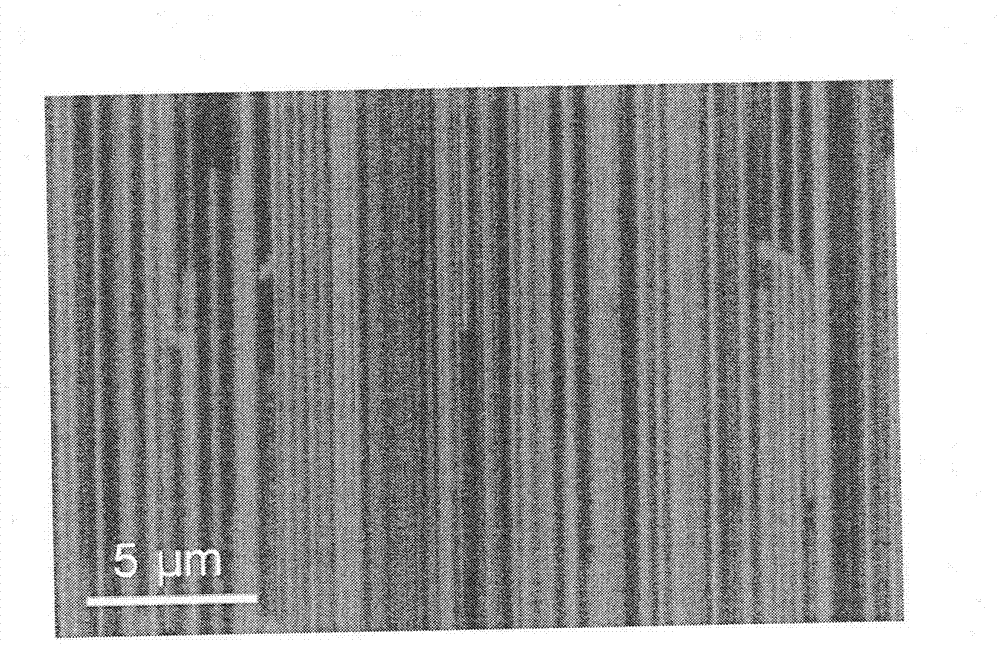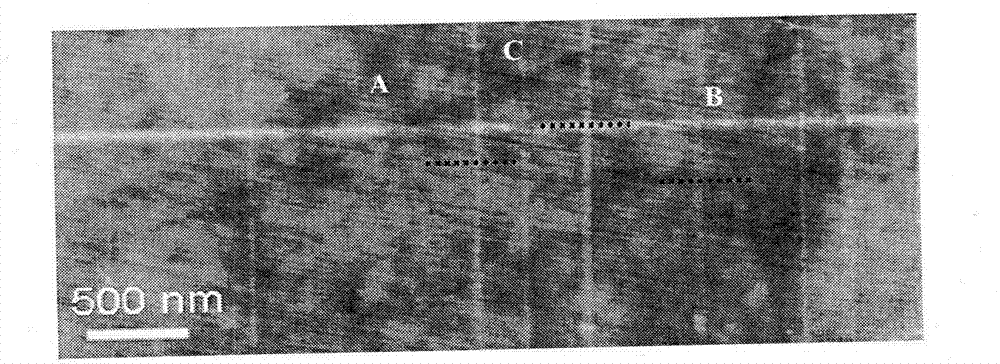Method for preparing oriented graphene nanoribbon (GNR) array
A graphene nanoribbon and array technology, applied in the field of graphene material preparation, can solve the problems of difficult device integration and difficult GNR device performance, and achieve low in-plane defect density, good electrical conductivity, and low edge disorder. Effect
- Summary
- Abstract
- Description
- Claims
- Application Information
AI Technical Summary
Problems solved by technology
Method used
Image
Examples
Embodiment 1
[0033] Embodiment 1 For the technical process of this embodiment, please refer to Figure 1a , which includes the following steps:
[0034] (1) The substrate material is a single-sided polished, constant temperature cut (ST-cut) single crystal quartz plate, where the positioning side X is perpendicular to one side of the quartz plate, the Y deviation Z is 42.75°, and the cutting deviation angle is less than ±0.3° . The substrate was ultrasonically cleaned with acetone, ethanol, and deionized water for 5 min respectively), and then dried with nitrogen. The cleaned substrate was annealed at 800° C. for 8 hours in an air atmosphere, and then cooled naturally. Finally, the annealed quartz substrate was ultrasonically cleaned with ethanol and deionized water again and dried with nitrogen.
[0035] (2) Firstly, metal chloride (CuCl 2 ) ethanol solution was dropped on the quartz boat (drop 80 μL). The quartz boat was heated to 450 °C for 25 min in an air atmosphere to oxidize the...
Embodiment 2
[0037] Embodiment 2 The technological process of the present embodiment please be close to embodiment 1, and it comprises the following steps:
[0038] (1) The substrate material is a single-sided polished, constant temperature cut (ST-cut) single crystal quartz plate, where the positioning side X is perpendicular to one side of the quartz plate, the Y deviation Z is 42.75°, and the cutting deviation angle is less than ±0.3° . The substrate was ultrasonically cleaned with acetone, ethanol, and deionized water for 1 min respectively), and then dried with nitrogen. The cleaned substrate was annealed at 800° C. for 1 hour in an air atmosphere, and then cooled naturally. Finally, the annealed quartz substrate was ultrasonically cleaned with ethanol and deionized water again and dried with nitrogen.
[0039] (2) First, metal chloride (NiCl 2 ) ethanol solution was dropped on the quartz boat (drop 100 μL). The quartz boat was heated to 400 °C for 25 min in an air atmosphere to o...
Embodiment 3
[0041] Embodiment 3 The technological process of the present embodiment please be close to embodiment 1, and it comprises the following steps:
[0042] (1) The substrate material is a single-sided polished, constant temperature cut (ST-cut) single crystal quartz plate, where the positioning side X is perpendicular to one side of the quartz plate, the Y deviation Z is 42.75°, and the cutting deviation angle is less than ±0.3° . The substrate was ultrasonically cleaned with acetone, ethanol, and deionized water for 10 min respectively), and then dried with nitrogen. The cleaned substrate was annealed at 850° C. for 10 hours in an air atmosphere, and then cooled naturally. Finally, the annealed quartz substrate was ultrasonically cleaned with ethanol and deionized water again and dried with nitrogen.
[0043] (2) Firstly, metal chloride (FeCl 3 ) ethanol solution was dropped on the quartz boat (drop 80 μL). In the air atmosphere, the quartz boat was heated to 600 °C for 60 mi...
PUM
 Login to View More
Login to View More Abstract
Description
Claims
Application Information
 Login to View More
Login to View More - R&D
- Intellectual Property
- Life Sciences
- Materials
- Tech Scout
- Unparalleled Data Quality
- Higher Quality Content
- 60% Fewer Hallucinations
Browse by: Latest US Patents, China's latest patents, Technical Efficacy Thesaurus, Application Domain, Technology Topic, Popular Technical Reports.
© 2025 PatSnap. All rights reserved.Legal|Privacy policy|Modern Slavery Act Transparency Statement|Sitemap|About US| Contact US: help@patsnap.com



